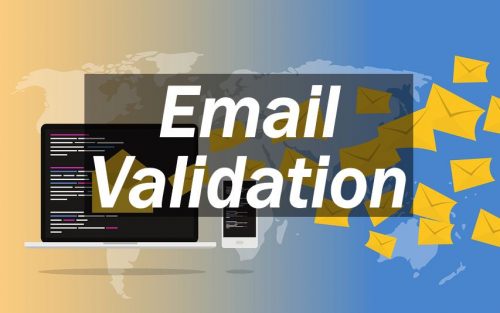
Email validation is the process of verifying the validity and deliverability of an email address. It is done to ensure that the email address provided by a user is accurate and can receive emails. Email validation helps prevent errors and inaccuracies in email marketing campaigns and other online activities that involve sending messages to customers or prospects, while helping support email compliance regulations.
The email validation process typically involves several steps, including:
- Syntax check: This involves checking whether the email address is correctly formatted and contains no typographical errors.
- Domain check: This involves verifying the domain name of the email address to ensure that it exists and is registered.
- Mailbox check: This involves verifying whether the mailbox associated with the email address is valid and can receive emails.
- Integrity check: This involves checking whether the email address and/or the email service provider has been flagged as high-risk or spam or is associated with spamming activities.
The Email Validation Process Explained
Email validation involves a combination of techniques to ensure that an email address is valid and formatted properly. The process includes syntax checking, domain name validation, and mail server validation.
Syntax Checking: Ensuring Proper Format
One of the first steps in email validation is syntax checking. This involves making sure that the email address is in the proper format, with a username, an @ symbol, and a domain name. For example, “[email protected]” is a properly formatted email address, while “[email protected]” is not.
Domain Name Validation: Confirming Existence and Registration
The next step is domain name validation, which involves checking that the domain name in the email address actually exists and is registered. This can be done by checking the domain name system (DNS) records for the domain. For example, if the email address is “[email protected]”, the DNS records for the “gmail.com” domain would be checked to ensure that it is registered and in use.
Mail Server Validation: Verifying Deliverability
The third step in email validation is mail server validation, also known as mail exchange (MX) validation. This step verifies that the email address is not only valid but also can be delivered by checking the MX records of the domain. This step ensures that the email address can be reached and received by the intended recipient.
Integrity Check: Verifying Email Service Provider Integrity
This final step checks the reputation of Email Service Providers (ESPs) and the emails associated with it against a global database that is constantly maintained by a global community focused on email health and accuracy.
Different Methods of Email Validation
Email validation can be done through a variety of methods, including using regular expressions, client-side JavaScript, and server-side scripting languages such as PHP or Java. Popular sample code libraries for email validation are available in most programming languages.
1. API Integration: Fast, Secure and Available
API products are supported with comprehensive documentation, developer guides, sample code, sample data and everything you need to get up and running as fast as possible. With 99.999% uptime, this is one of the simplest and most reliable ways to implement an email verification service.
2. Regular Expressions: Simple and Fast
One method of email validation is using regular expressions, which are a series of characters that define a search pattern. Regular expressions can be used to validate the syntax of an email address and ensure that it is formatted properly.
3. Client-side JavaScript: Real-time Validation
Client-side JavaScript can be used to validate email addresses in real-time as users enter them into a form. This method provides immediate feedback to users if they enter an invalid email address, which can help to reduce the number of incorrect email addresses submitted.
Benefits of Verifying Email Address:
- Reduced Bounce Rates: Verifying email addresses helps to reduce the number of undeliverable emails, commonly known as bounce rates. This ensures that emails are delivered to valid and active email accounts, improving the success rate of email marketing campaigns.
- Increased Email Deliverability: By verifying email addresses, businesses can increase the deliverability of their emails. This means that emails are more likely to reach their intended recipients, resulting in higher open and click-through rates.
- Improved Data Quality: Verifying email addresses helps to improve the quality of customer data. It ensures that the email addresses collected are accurate, up-to-date, and belong to real individuals or businesses.
- Cost Savings: Verifying email addresses can result in cost savings for businesses. It reduces the number of undeliverable emails, which can result in reduced email marketing costs.
- Enhanced Sender Reputation: Verifying email addresses helps to improve the sender’s reputation. A high sender reputation helps to ensure that emails are not flagged as spam and are more likely to reach the inbox of the recipient.
In conclusion, Email validation is an essential process that can help to ensure that an email address is valid, formatted properly and can be delivered. It is done using a combination of Syntax checking, Domain name validation, Mail server validation and Integrity checks, which can be done by using a simple to integrate API. Email validation is important for reducing bounce rates, improving deliverability, and preventing fraud and spam.
Visit Service Objects to learn how simple it is to add email validation to your lead capture forms.
Interesting Related Article: “Key Benefits You Can Get From Using Bulk Email Service“

